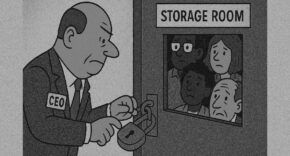President Donald Trump’s “One Big Beautiful Bill,” signed on July 4, 2025, reshaped the Supplemental Nutrition Assistance Program to push more able-bodied adults into work, training, or community service. Supporters say the reforms restore the dignity of work and curb runaway costs. House Speaker Mike Johnson called SNAP a “bloated, inefficient program” and said Republicans are “proud to defend commonsense welfare reform, fiscal sanity, and the dignity of work.
Beginning in late 2025, able-bodied adults ages 18 to 64 must work, train, study, or volunteer at least 80 hours per month to receive SNAP beyond three months in a three-year period. The top age was 54 before. Several exemptions ended, so veterans, people experiencing homelessness, and young adults who aged out of foster care now have to meet the rule. The caregiver exemption narrowed to parents of children under 14. A new exception covers Native Americans, Alaska Natives, Indigenous peoples, and tribal members.
States also lost most of their flexibility to waive work rules. The old standard allowed waivers in areas that lacked jobs. The new standard allows waivers only where unemployment is at least 10 percent. Economist Lauren Bauer said that is an “utterly insane standard,” since national unemployment is far lower in normal times.
Who Could Be Affected
SNAP serves more than 42 million people. The average benefit is $177 per person per month, about $6 per day. Children make up 39 percent of recipients, older adults 20 percent, and non-elderly people with disabilities 10 percent. The Congressional Budget Office estimates about 2 million people will exit SNAP in an average month under the new rules. The USDA also expects roughly 90,000 legally present noncitizens per month to lose eligibility because the law narrows immigrant categories that qualify.
Putting those figures into simple budget terms shows the scale. Using the average benefit, SNAP spending is roughly $7.43 billion per month and about $89.2 billion per year. If 2 million people leave the program, that is an estimated $4.25 billion less in annual benefits. Those savings can be redirected, and they also reduce federal borrowing.
What States Are Doing Right Now
States must retrain staff, retool software, and prepare front-line caseworkers to verify and track work hours. The USDA urged states to invest in training teams, second-party case reviews, standardized guides, video refreshers on error trends, monthly bulletins on common mistakes, system modernization, and client outreach.
Many states are already moving. West Virginia said changes will affect about 36,000 recipients. Massachusetts began enforcing new rules on November 1 but is phasing them in at each household’s annual recertification. Georgia is notifying clients through its Gateway portal and directing people to check account notices for deadlines and required actions.
The workload shift is steep. In New York, counties thought they had until March, then learned they had only weeks. Greene County social services commissioner Kira Pospesel said, “Every idea is going to be on the table,” as her team tries to get ahead of calls and interviews during the winter assistance rush. Oswego County’s Phil Church said, “We’re going to have to have all hands on deck for this,” and expects to triple the number of staff assigned to SNAP to meet the surge in orientations and verifications.
Connecticut faces similar pressure. Social Services Commissioner Andrea Barton Reeves told lawmakers, “They’ve given us a virtually nonexistent window in which to implement the changes,” and warned that “about 36,000 people in these new categories” could be at risk if they do not meet or document work activity.
The Financial Perspective for States
Two structural changes alter state finances beyond individual benefits:
- Administrative cost share. States’ share of SNAP administrative costs will rise to 75 percent in fiscal year 2027, up from 50 percent. That shift requires legislatures to budget more for staff, technology, and outreach. States that invest early in accurate eligibility systems may avoid larger bills later.
- Payment error rate cost sharing. Starting in fiscal year 2028, states must share the cost of benefits if their payment error rate exceeds 6 percent. The tiers are 5 percent cost share for a 6–8 percent error rate, 10 percent for 8–10 percent, and 15 percent above 10 percent. Since payment errors include both overpayments and underpayments, governors and agencies have a strong incentive to modernize systems and training to keep error rates low.
There are also direct program dollars at stake. SNAP-Ed, the nutrition education program, was eliminated effective October 1, 2025. That program provided $536 million in fiscal year 2025 and had been estimated at $550 million in fiscal year 2026 before the cutoff. States may use unspent funds through fiscal year 2026, then the money disappears.
Put together, these changes shift meaningful costs to states but also reward strong management. States that build better eligibility and reporting tools will avoid error surcharges and keep required state spending in check.
What Supporters Say
The case for the reforms is simple. In the old system, too many able-bodied adults stayed on benefits without engaging in work or training. The new law ties assistance to effort. It also reins in waivers that excused work in most places. From this perspective, that is exactly the right move. When work is required, people look for jobs, enroll in training, or serve their community to keep benefits. If they refuse to engage, limited taxpayer funds are preserved for children, seniors, and people with disabilities.
What Detractors Say
Advocates and some local officials warn that the transition is moving too fast and could knock eligible workers off the rolls because of paperwork hurdles. Brittany Christenson of a benefits technology firm said the timeline has created “widespread confusion among both administrators and beneficiaries.” In rural areas, lack of transit makes job searches hard. “None of these bills came with a job offer,” Gina Plata-Nino said, pointing to real barriers like transportation and child care. In Maine, food bank leaders report rising demand even before the cuts take full effect. “SNAP is a lifeline,” said advocate Carla Houser, who worries that older workers and people with unstable housing will struggle to meet reporting rules. For veterans with PTSD, Dianne Lim-Tam cautioned that an 80-hour monthly minimum “may not be really feasible.”
The Shutdown Wild Card and Court Rulings
The government shutdown complicated the rollout. A federal judge ordered USDA to fund November benefits at least partially, while the administration said full payments must wait until the government reopens. The court also blocked USDA from canceling certain work-requirement waivers before their expiration dates. These developments have created short-term uncertainty for agencies and recipients.
The reforms reset SNAP around work. They reduce long-term costs, target benefits to those with genuine need, and challenge able-bodied adults to participate in the economy. That is a fair trade for a program of this size. Using the average benefit and caseload, SNAP is close to a $90 billion annual commitment. If policy moves 2 million people into work or training and trims about $4.25 billion in yearly outlays, that is a significant fiscal gain and a cultural nudge toward independence.
The road to implementation is rocky. Counties need staff. States need better software. Recipients need clear guidance. But these are management problems with management solutions. The core principle is sound. Work should be the norm for those who can work. With steady execution from states and honest communication to recipients, SNAP can remain a strong safety net while encouraging more Americans to move from benefits to paychecks.





